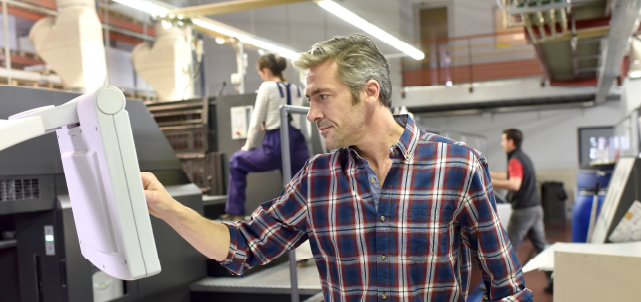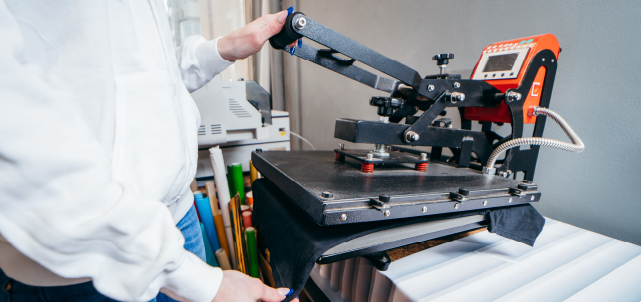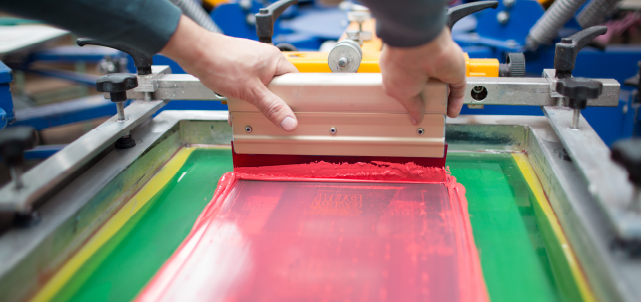The darkroom we’re discussing today isn’t the red-tinged room with a photographer piecing together evidence for your favorite mystery show. Screen rooms, also known as darkrooms, are essential to running your screen printing business. But what we only occasionally consider is how important the screen printing darkroom layout is and its impact on efficiency.
We put together some essential factors to consider when evaluating your screen room’s layout. Best practices and tips for optimizing the space for efficiency are also included!
Finding the Space
The first step is to find a spare room to designate as the screen room. While size does not matter a great deal, as they can range from a closet to a bedroom-sized, it is important that you have room to work efficiently and fluidly. While you can technically set one up in the corner of your production floor, a room with a door separating it from the rest of the shop is the ideal choice for the following reasons. Do not overlook the fact that this room affects the quality of everything you produce. It should be clean and well organized.
Lighting
Despite the name, your darkroom doesn’t need to be dark. The most important lighting factor is filtering out UV light.
A room with no natural light is ideal, but if that’s not an option, you can use black plastic sheeting or wood to blackout windows. As far as the room’s artificial light, which you need since it’s still a workspace, you should use UV-blocking film for a dimmer, more amber-colored light that is safe to use around screens.
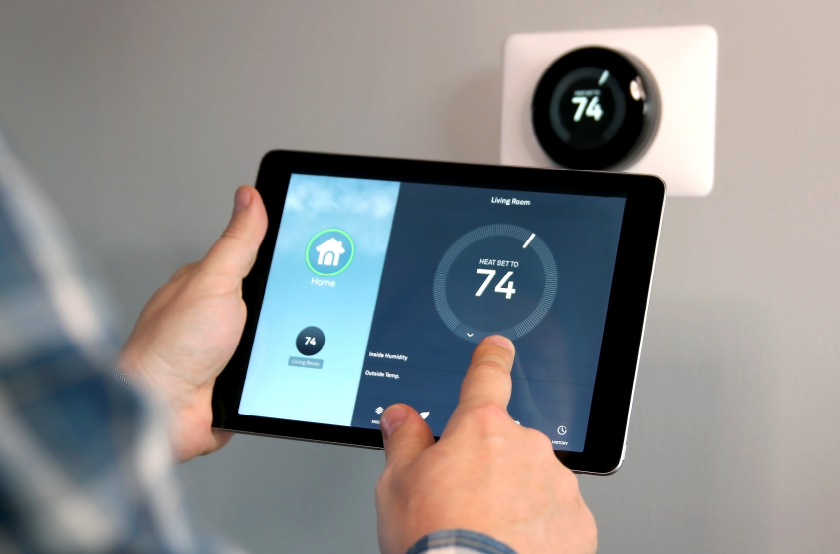
Temperature
You need to be able to control the temperature of the room since materials like liquid emulsion and capillary film are heat sensitive. The good news is that you just need to keep the space at a moderate temperature, between 75 and 90 degrees.
Humidity
The screen room is where you are drying screens. Ideally, you do not want humidity to negatively influence your dry times. To control humidity, invest in a dehumidifier to remove water from the air until relative humidity is reduced to the level you choose. We recommend keeping the humidity control around 35% to 40% to allow for quick and thorough drying.
Dust
It’s crucial to keep the darkroom clean and dust-free. Pinholes can occur during printing if dust is present on wet screens, exposure units, or film positives. Cleaning your screen room regularly is the best solution to keep this issue at bay.
Prepping Screens for Darkroom
Proper screen preparation for the darkroom is an essential step in creating high-quality screens. Your most important tool will be the emulsion scoop coater, used to apply the liquid emulsion to the mesh. Your scoop coater should have a smooth, sharp surface—dents and nicks will interfere with the process.
After coating the emulsion, it’s time to dry your screen in the darkroom. Storage can become an issue, but this isn’t anything a screen drying cabinet or rack couldn’t solve. Fans can help the drying process by moving air around, but you must ensure the area and fans are entirely dust-free. You may opt out of fans if you’re worried about messing up results, but frequent cleanings and low settings should help you avoid this issue.
Developing Screens
Once the screens have dried and been exposed, you can finish the development process. You can utilize a washout booth or a dip tank filled with clean water to wash away the unhardened emulsion.
You will also need to keep the washout area in a separate space away from the drying racks. Close proximity can influence the humidity of the darkroom, which can impact the drying time of your screens.
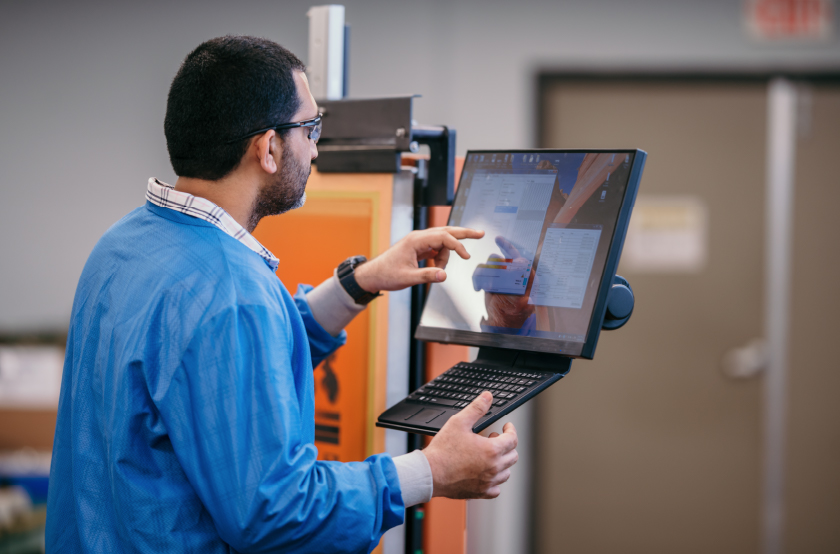
An Innovative Solution
The proper darkroom layout is vital to ensure you work effectively and efficiently. However, automation is a rising trend in the screen printing industry, and computer-to-screen (CTS) technology can potentially eliminate the need for a darkroom altogether.
EXILE Technologies offers CTS technology and more with professional-grade thermal imaging equipment, direct-to-screen printers, screen printing equipment, and film products. Our Spyder II and Spyder III create screen masks with incredible speed and accuracy, and our V-Lux exposes your screens to the correct spectrum of UV light. When paired together, high-quality results are always guaranteed.
We also offer firsthand looks in our demo area to ensure our equipment is what your screen printing business needs. Contact us today to get more information!


